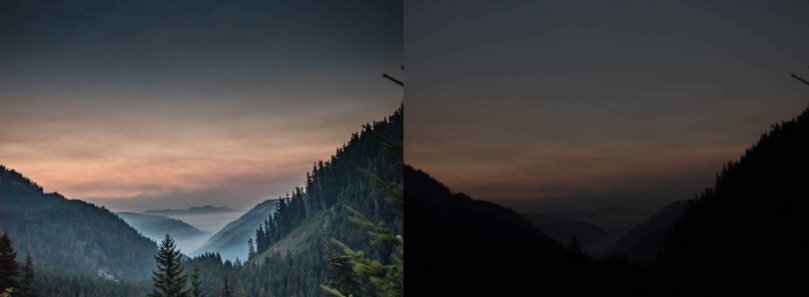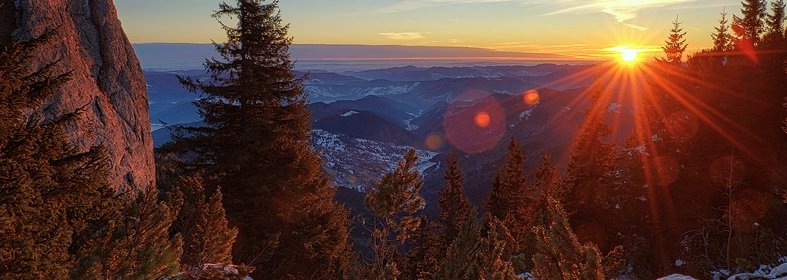
If you are someone who is into photography, then it is safe to assume that you may have heard the term dynamic range being used now and then.
There is nothing new about it, this term has existed in the market for as long as one can remember, and it is important to have a better understanding of it, as well.
However, a lot of the times, people are wondering just what is dynamic range? Well, the answer is not that difficult.
For starters, dynamic range is essentially a measure that is used in a lot of different fields from photography to sound, physics, along with several other fields.
Therefore, understanding it in photography is different than it is in music or something similar. We are here to discuss how dynamic range works in photography and what exactly is it. After all, it is better that you have the information needed.
What Is Dynamic Range In Photography?
Simply put, the dynamic range is something that varies from photo to photo. It essentially is the measure of the range of light intensities from the shadows to the highlights, or the darkest parts of the picture to the lightest port of the pictures.
In other words, the dynamic range serves as the difference between the darkest and the lightest part of the photo.
I know it might be a bit difficult to understand, but the concept of dynamic range is relatively easy to understand, and it is also important to know that it is never the same.
Two pictures could have drastically different dynamic ranges, and that is what happens to be the most important aspect.
However, this does not end here as you have to understand how to use dynamic range for your advantage when taking photos.

Why Dynamic Range Matters? How To Use It For Better Photos?
I remember every time someone asks me about a camera suggestion, the first thing they ask is how many megapixels are there in the sensor and not about anything else. It takes me a lot of time to explain how megapixels don’t matter all that many other details matter more.
Take the legendary Sony A7SIII, for example, it only uses a 12-megapixel sensor, but the camera is capable of delivering one of the finest performance as far as photography and videography are concerned. Why? Well, you are getting a lot of amazing features within the camera that makes it a perfect option.

The camera has one of the best dynamic range, and if you don’t already know, the higher the dynamic range of the camera, the more details will be retained in the shadows as well as the highlights of the image.
This means that if you want to boost the shadows, you will be able to do it without getting more noise in the darker of the images.
To get the best out of your camera and your dynamic range, be sure that you are taking pictures using a body that is good with dynamic range.
Most of the modern cameras come with 15 stops of dynamic range, which is excellent, and by some trial and error, you will be able to take excellent images in no time.
How To Judge Dynamic Range?
Judging or telling about the dynamic range by just looking at the picture is not possible at all. Even if you happen to have the highest grade display or the camera, for that, you will have to start paying attention to the histogram that you can see once you take the image or in image-editing software.
Now, what exactly is a histogram?
That is another question that a lot of people ask or want to know about. In photography, the histogram is used to show the range of subject brightness, starting with black on the left going to the white on the right.
The width of the histogram chart represents the dynamic range of your camera sensor. The wider the width, the higher the dynamic range.

However, there are some situations in which the subject dynamic range is bigger than the camera dynamic range, and if that is the case, then one part of your image either will be under or overexposed.
That is why a histogram is used to be sure that the dynamic range is perfect.
However, if you don’t want to rely on the histogram of your camera, you can always put the photo up into something like Adobe Lightroom, and that software is great for giving you more information on the image.
If the histogram fits inside of the histogram display area, then the dynamic range of the picture is within the range that your camera has to offer.
If the histogram is clipped at either end of the subject, the range is on the wider side. You can try changing the exposure of the camera and see the histogram move left or right, and see if you can fit the histogram within the display.
Related articles:
- What is the focal length in photography?
- What is spot metering? – when, why & how to use it?
- What is the depth of field in photography?
- What is aps-c? How do aps-c cameras work?
- What is the hyperfocal distance in photography?
- What is a softbox? How does it work in photography?
Setting Up The Scene: How To Extend The Dynamic Range
While this might not matter to the casual photographer or the hobbyist, this is something that is of higher concern to someone who wants the best possible photos.
1- Learn Your Histogram
Okay, first things first, whenever you are setting up a scene, I would suggest that you study a while about the histogram. I am not going to ask you to do it while you are in the middle of setting up for a scene but if you want to, start taking pictures of inherently different scenes and find out about the dynamic range.
In addition to that, I would highly suggest that you study histogram both on both your camera’s display as well as the photo editing software that you use so you can have a better understanding of how things work.

This is, for many people, a trial and error, but once you do get a hold of the histogram and how things work, you will not have any issues.
Once you have learned the histogram, you will have a proper understanding of how to take pictures without messing up the dynamic range in any of the shots.
This is one of the reasons why some people are generally so good at taking great-looking shots because they are fully aware of how dynamic range works, and how histograms are read.
2- Use A Graduated Filter

A graduated filter or a graduated ND filter is something that is used a lot more common in the world of photography, and it can be used to allow you to shoot in incredibly bright conditions without the utter loss of highlights or shadows.
The thing with these filters is that you have to be certain that you are getting a filter that fits the thread size of the lens that you have. Therefore, different lenses have different ND filter requirements.
In addition to that, it is also important to know that high-end cinema cameras already are equipped with these filters.
But if you are using a consumer-level DSLR or mirrorless camera, you will have to invest in a graduated filter separately. If you are looking for a good company, PolarPro makes some of the finest graduated ND filters that are used by professionals all over the photography industry.
Granted, they are among the more expensive and premium options, but they are mostly one-time investments, after which you do not have to stress over whether you are going to waste your money or not.
3- Shoot Low ISO
I know this might not sound like an important thing to a lot of people, but if you are truly looking to get great dynamic range within your photos, you should shoot at lower ISO. The goal here is to go as low as possible without making the photo look completely dark.
The lower the ISO, the lesser the noise in the photos, which will give you a great overall experience, and you will not have any issues that might come your way, either. Just be sure that you are experimenting with ISO as much as possible.
The learning curve of ISO is not that difficult, to be honest. But if you are new to this, it might take some time before you get used to it, and you will do just fine once you do get a hang of it, and things will work just fine for you.
4- Avoid High Contrast Scenes
There are certain shooting conditions in which there is a lot of contrast going around. While I would not always suggest that you avoid them if you want to take picture of such a scene, be sure that you are using the three tips that I have mentioned above.
You might have to play around with the settings a bit to be sure that you are getting the best possible experience because, without that, you might not be able to get the right shot. The key here is to know all about photography and how things work together.
Your camera’s exposure, ISO, aperture, shutter speed, and other things are going to combine to become the perfect image, and that is what happens to be the most important factor as far as the picture-taking process is concerned.

Dynamic Ranges Of Common Devices
Now when you are talking about understanding dynamic range, this is something that you might have a hard time understanding because it is not something that can be summed up in a few words.
But we have talked all we could about dynamic range, so the next logical step is knowing the dynamic range of common devices.
This is important because when you are taking pictures, might not have the proper idea about the dynamic range of the device you are using.
Well, to put it simply, most of the modern cameras have a maximum of 15 steps of dynamic range, however, the more affordable options have 10 steps of dynamic range.
However, the topic of dynamic range and understanding the working that goes into is a lot more complicated and can have a separate book written on it.
Therefore, until you are doing it for research purposes, you can find the answers in the official product spec sheet of whatever camera you are buying.
Rest assured, as long as you know how to work with dynamic range, you will have a much easier time understanding how the rest of the things work, and it will not create any issues.

The HDR – High Dynamic Range
Now that you have learned almost everything basic about what dynamic range is all about, the next step is to start understanding what HDR or high dynamic range is. I know these two sound a lot similar, but are inherently different, and therefore, it is wiser that you know more and more about these. After all, not doing your research could lead to a lack of knowledge.
High dynamic range is a way of introducing more dynamic range into the photos or pictures; the principle or how HDR works is a lot simpler than one might think. For starters, HDR photos comprise three photos that are taken at different exposures.
These photos are then combined, an and HDR image is produced, which, as you may have guessed, has a lot of dynamic range as compared to a single photo. In the older days, cameras were not capable of processing HDR images on their own, so you had to piece together the images in post-processing.
However, modern-day cameras can do it on their own without the need for an additional piece of software. Additionally, to view HDR content, you also need to have devices that support HDR standard to begin with.
Most modern smartphones, as well as televisions, are HDR supported, so that is not going to be a lot of issues. At the same time, a lot of people around the world claim that HDR is just a gimmick, and it is not going to do much for anyone. However, that is not the case.
As someone who has been taking photos for as long as I can remember, HDR exists and can make a lot of difference. However, it is not required in all situations, and that is what is more important.
Frequently Asked Questions (FAQs)
Q1- Is more dynamic range better?
Answer: Yes, in most cases, the more dynamic range you have, the better control you will have over the images that you are taking or the videos that you are shooting.
Q2- What is the definition of dynamic range?
Answer: Dynamic range is essentially a measure for the difference between the darkest parts of a picture to the lightest part of the pictures or the difference between the darkest shadows or brightest highlights.
Q3- What is the dynamic range of a camera?
Answer: A dynamic range of a modern DSLR or a mirrorless camera tops at 15 stops. However, some older cameras have a dynamic range as high as 10 stops.
Q4- Does ISO affect dynamic range?
Answer: Yes, higher or lower ISO can influence the dynamic range by a lot. Therefore, it is generally suggested that you are taking pictures at a lower ISO, so it gives you more flexibility in post-processing without ruining the image.
Q5- How is the dynamic range calculated?
Answer: There are different methods of calculating dynamic range based on the application, in photography, dynamic range can be calculated as by the ratio of maximum light intensity measurable (at pixel saturation), to minimum light intensity measurable (above read-out noise).
Wrap-Up:
We understand that the concept of dynamic range might confuse a lot of people.
As a photographer, I have found myself in a similar situation as well, but at the end of the day, you have to understand that it is not that difficult, to begin with. You can easily make the most of the situation.
Thankfully, if you are consistent with the process, understanding the dynamic range is not going to be difficult at all. It is a fairly simple and straightforward process that one can take part in, and you will do just fine once you have understood it.
It will allow you to take great pictures, and well, it is always an extension of the skill that you can constantly use.